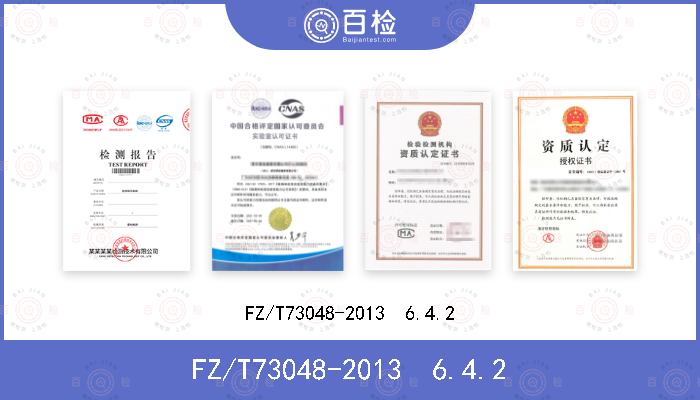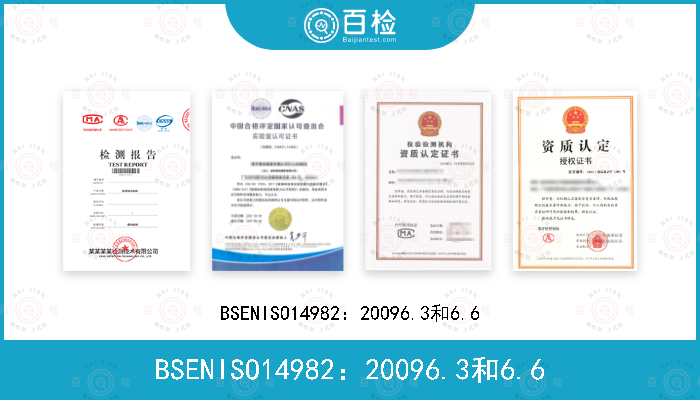SAE AIR 790C-2006 航空器燃料系统中冻结成冰的考虑
百检网 2021-07-20
标准号:SAE AIR 790C-2006
中文标准名称:航空器燃料系统中冻结成冰的考虑
英文标准名称:(R) Considerations on Ice Formation in Aircraft Fuel Systems
标准类型:V31
发布日期:2006/8/1 12:00:00
实施日期:1999/12/31 12:00:00
中国标准分类号:V31
国际标准分类号:49.050
引用标准:SAE ARP 1401A;MIL-F-17874B
适用范围:Ice formation in aircraft fuel systems results from the presence of dissolved and undissolved water in the fuel. Dissolvedwater or water in solution with hydrocarbon fuels constitutes a relatively small part of the total water potential in aparticular system with the quantity dissolved being primarily dependent on the fuel temperature and the water solubilitycharacteristics of the fuel. One condition of undissolved water is entrained water such as water particles suspended in thefuel as a result of mechanical agitation of free water or conversion of dissolved water through temperature reduction.Another condition of undissolved water is free water which may be introduced as a result of refueling or the settling ofentrained water which collects at the bottom of a fuel tank in easily detectable quantities separated by a continuousinterface from the fuel above. Water may also be introduced as a result of condensation from air entering a fuel tankthrough the vent system.Entrained water will settle out in time under static conditions and may or may not be drained, depending on the rate atwhich it is converted to free water. In general, it is not likely that all entrained water can ever be separated from fuel underfield conditions. The settling rate depends on a series of factors including temperature, quiescence and droplet size. Thedroplet size will vary depending upon the mechanics of formation. Usually the particles are so small as to be invisible tothe naked eye, but in extreme cases can cause a slight haziness in the fuel.Free water can be drained from a fuel tank if low point drain provisions are adequate. Water in solution cannot beremoved except by dehydration or by converting it, through temperature reduction, to entrained, then to free water.Water strictly in solution is not a serious problem in aviation fuel so long as it remains in solution. Entrained and free waterare the most dangerous because of the potential of freezing on the surfaces of the fuel system. Further, entrained waterwill freeze in cold fuel and tend to stay in solution longer since the specific gravity of ice is approximately the same as thatof hydrocarbon fuels.The elimination of undissolved water, to the extent practicable, in fuel storage, handling and delivery systems as well as inaircraft fuel systems can reduce or eliminate the potential for icing problems. Appropriate testing of fuel systems, subsystems and components under controlled icing conditions can establish confidence in the safe operation of the aircraftfuel system in such icing conditions. Considerations for these measures to control potential icing problems are addressedherein.Several things happen to moisture laden fuel as the temperature is lowered, and an understanding of this helps to arriveat proper fuel conditioning procedures and subsequent testing for icing conditions. As the temperature of fuel is lowered,concentration of water droplets in the fuel begins to decrease in the vicinity of 40 to 50 °F (4 to 10 °C). Therefore, to get areliable conditioning of fuel, samples should be taken and mixing of fuel and water should be accomplished beforelowering the temperature further. Ice crystals begin to form as the temperature nears the freeze point of water; however,due to impurities in the water, this normally takes place at slightly lower temperatures (27 to 31 °F) (-3 to -1 °C). As thetemperature is lowered further, the ice crystals begin to adhere to their surroundings in the form of ice.
中文标准名称:航空器燃料系统中冻结成冰的考虑
英文标准名称:(R) Considerations on Ice Formation in Aircraft Fuel Systems
标准类型:V31
发布日期:2006/8/1 12:00:00
实施日期:1999/12/31 12:00:00
中国标准分类号:V31
国际标准分类号:49.050
引用标准:SAE ARP 1401A;MIL-F-17874B
适用范围:Ice formation in aircraft fuel systems results from the presence of dissolved and undissolved water in the fuel. Dissolvedwater or water in solution with hydrocarbon fuels constitutes a relatively small part of the total water potential in aparticular system with the quantity dissolved being primarily dependent on the fuel temperature and the water solubilitycharacteristics of the fuel. One condition of undissolved water is entrained water such as water particles suspended in thefuel as a result of mechanical agitation of free water or conversion of dissolved water through temperature reduction.Another condition of undissolved water is free water which may be introduced as a result of refueling or the settling ofentrained water which collects at the bottom of a fuel tank in easily detectable quantities separated by a continuousinterface from the fuel above. Water may also be introduced as a result of condensation from air entering a fuel tankthrough the vent system.Entrained water will settle out in time under static conditions and may or may not be drained, depending on the rate atwhich it is converted to free water. In general, it is not likely that all entrained water can ever be separated from fuel underfield conditions. The settling rate depends on a series of factors including temperature, quiescence and droplet size. Thedroplet size will vary depending upon the mechanics of formation. Usually the particles are so small as to be invisible tothe naked eye, but in extreme cases can cause a slight haziness in the fuel.Free water can be drained from a fuel tank if low point drain provisions are adequate. Water in solution cannot beremoved except by dehydration or by converting it, through temperature reduction, to entrained, then to free water.Water strictly in solution is not a serious problem in aviation fuel so long as it remains in solution. Entrained and free waterare the most dangerous because of the potential of freezing on the surfaces of the fuel system. Further, entrained waterwill freeze in cold fuel and tend to stay in solution longer since the specific gravity of ice is approximately the same as thatof hydrocarbon fuels.The elimination of undissolved water, to the extent practicable, in fuel storage, handling and delivery systems as well as inaircraft fuel systems can reduce or eliminate the potential for icing problems. Appropriate testing of fuel systems, subsystems and components under controlled icing conditions can establish confidence in the safe operation of the aircraftfuel system in such icing conditions. Considerations for these measures to control potential icing problems are addressedherein.Several things happen to moisture laden fuel as the temperature is lowered, and an understanding of this helps to arriveat proper fuel conditioning procedures and subsequent testing for icing conditions. As the temperature of fuel is lowered,concentration of water droplets in the fuel begins to decrease in the vicinity of 40 to 50 °F (4 to 10 °C). Therefore, to get areliable conditioning of fuel, samples should be taken and mixing of fuel and water should be accomplished beforelowering the temperature further. Ice crystals begin to form as the temperature nears the freeze point of water; however,due to impurities in the water, this normally takes place at slightly lower temperatures (27 to 31 °F) (-3 to -1 °C). As thetemperature is lowered further, the ice crystals begin to adhere to their surroundings in the form of ice.
百检能给您带来哪些改变?
1、检测行业全覆盖,满足不同的检测;
2、实验室全覆盖,就近分配本地化检测;
3、工程师一对一服务,让检测更精准;
4、免费初检,初检不收取检测费用;
5、自助下单 快递免费上门取样;
6、周期短,费用低,服务周到;
7、拥有CMA、CNAS、CAL等权威资质;
8、检测报告权威有效、中国通用;
客户案例展示
相关商品
版权与免责声明
①本网注名来源于“互联网”的所有作品,版权归原作者或者来源机构所有,如果有涉及作品内容、版权等问题,请在作品发表之日起一个月内与本网联系,联系邮箱service@baijiantest.com,否则视为默认百检网有权进行转载。
②本网注名来源于“百检网”的所有作品,版权归百检网所有,未经本网授权不得转载、摘编或利用其它方式使用。想要转载本网作品,请联系:service@baijiantest.com。已获本网授权的作品,应在授权范围内使用,并注明"来源:百检网"。违者本网将追究相关法律责任。
③本网所载作品仅代表作者独立观点,不代表百检立场,用户需作出独立判断,如有异议或投诉,请联系service@baijiantest.com
最新资讯



















